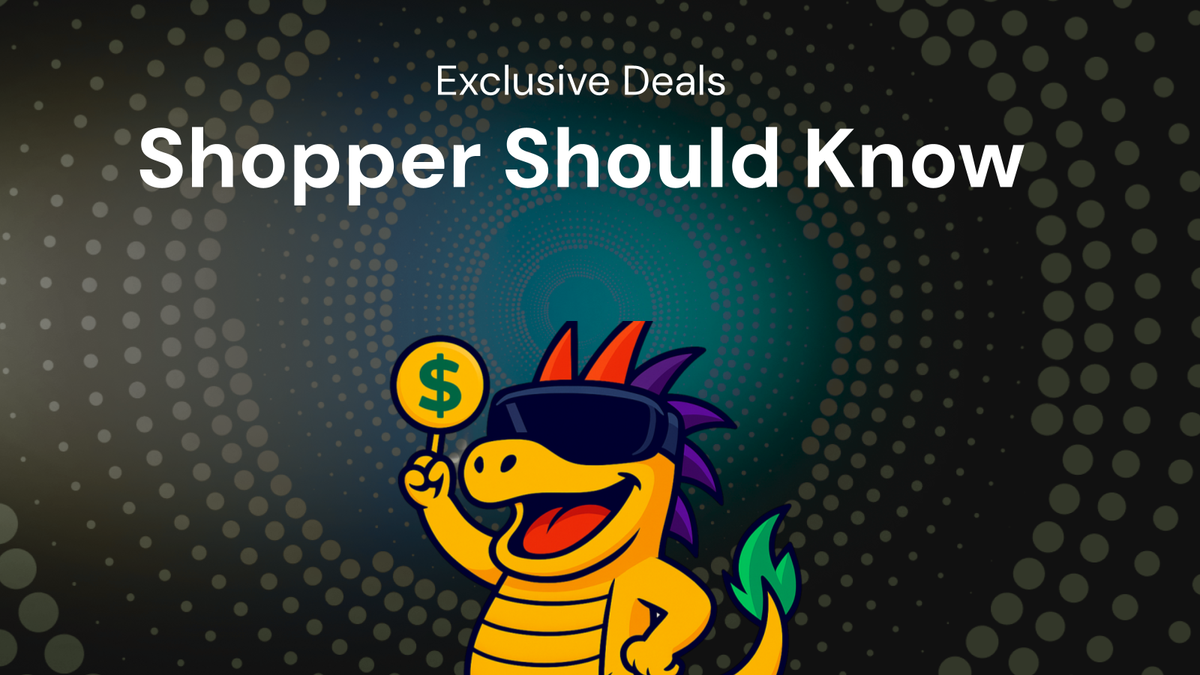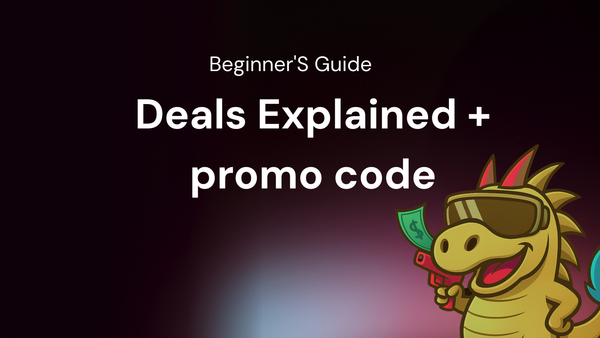How To Find Every Shopper Should Know for language learning apps exclusive deals

Unlocking Language Learning Deals: A Shopper's Guide to Finding Exclusive App Discounts
Learning a new language opens doors to new cultures, career opportunities, and personal enrichment. And in today's digital age, language learning apps have revolutionized the way we acquire these skills, offering convenient, engaging, and often personalized learning experiences. However, the cost of subscriptions can sometimes be a barrier. This comprehensive guide provides savvy shoppers with the knowledge and strategies to uncover exclusive deals on language learning apps, ensuring you can embark on your linguistic journey without breaking the bank.
I. Understanding the Language Learning App Landscape and Pricing Models
Before diving into deal-hunting tactics, it's essential to understand the diverse landscape of language learning apps and their common pricing models. This knowledge will empower you to make informed decisions and recognize genuine value when a deal presents itself.
- App Categories:
- Comprehensive Platforms: These apps offer a wide range of languages, structured courses, and often incorporate various learning methods (reading, writing, listening, speaking). Examples include Duolingo, Babbel, Rosetta Stone, and Memrise.
- Tutor-Based Apps: These platforms connect you with native speakers for personalized lessons and conversational practice. Examples include italki, Verbling, and Preply.
- Vocabulary-Focused Apps: These apps concentrate on building vocabulary through flashcards, spaced repetition, and interactive games. Examples include Anki, Memrise (used primarily for user-generated content), and Drops.
- Niche Language Apps: These apps specialize in a particular language or language family. Examples include LingoDeer (focuses on East Asian languages), Clozemaster (sentence-based learning), and Innovative Language series (various languages with audio and video lessons).
- Common Pricing Models:
- Freemium: A basic version of the app is free, often with limited content, ads, or features. Upgrading to a paid subscription unlocks more content, removes ads, and provides access to advanced features.
- Subscription-Based: Access to the entire app or specific features requires a recurring subscription (monthly, quarterly, or annually).
- One-Time Purchase: In some cases, apps offer a lifetime subscription or a one-time purchase option, granting permanent access to the app's content and features.
- Credit-Based Systems: Tutor-based apps often use a credit system where you purchase credits to book lessons with tutors.
- In-App Purchases: Some apps offer additional content or features as in-app purchases, supplementing the core subscription.
II. Proven Strategies for Finding Language Learning App Deals
Now that you have a foundational understanding of the app landscape and pricing, let's explore the most effective strategies for finding exclusive deals:
- 1. Monitor Official App Websites and Social Media Channels:
- Direct Source Advantage: The most reliable source for deals is often the app developers themselves. Regularly visit their official websites and follow them on social media platforms like Facebook, Twitter, Instagram, and LinkedIn.
- Promotional Periods: Many apps offer seasonal promotions (e.g., New Year's resolutions, back-to-school, holiday sales), limited-time discounts, or special offers linked to specific events.
- Newsletter Subscriptions: Sign up for email newsletters from your favorite language learning apps. Newsletters often contain exclusive deals, early access to promotions, and insider information.
- Contests and Giveaways: Keep an eye out for contests, giveaways, and social media challenges hosted by app developers. These can be great opportunities to win free subscriptions or discounted access.
- 2. Explore Educational and Student Discounts:
- Dedicated Programs: Some language learning apps offer special discounts to students, teachers, and educational institutions. Check the app's website or contact customer support to inquire about eligibility requirements.
- Student Discount Platforms: Utilize student discount platforms like UNiDAYS, Student Beans, and MyUnidays to search for exclusive deals on language learning apps.
- Bundled Offers: Explore partnerships between educational institutions and language learning apps. Your school or university might have negotiated a special rate for students and faculty.
- 3. Leverage Third-Party Deal Websites and Coupon Codes:
- Aggregator Sites: Utilize reputable deal websites and coupon code platforms like RetailMeNot, Groupon, Honey, and Slickdeals to search for discounts on language learning apps. Be sure to check the expiration dates and terms and conditions of each offer.
- Browser Extensions: Install browser extensions like Honey or Rakuten to automatically find and apply coupon codes while you browse the app's website.
- Cautionary Note: Exercise caution when using unknown or unverified coupon code websites. Some websites might contain outdated or invalid codes, or even malicious software. Stick to reputable sources and double-check the validity of the code before applying it.
- 4. Take Advantage of Free Trials and Introductory Offers:
- Risk-Free Exploration: Most language learning apps offer free trials or introductory periods. This allows you to explore the app's features, content, and teaching methods before committing to a paid subscription.
- Strategic Timing: Time your free trial strategically to coincide with a promotional period or holiday sale. You might be able to secure a discount upon converting to a paid subscription after the trial ends.
- Stacked Offers: Look for apps that offer both a free trial and a first-time user discount. This can significantly reduce the initial cost of your subscription.
- 5. Consider Bundle Deals and Family Plans:
- Cost-Effective Learning: If you're learning a language with family members or friends, consider purchasing a bundle deal or a family plan. These options often offer significant savings compared to individual subscriptions.
- Shared Access: Family plans allow multiple users to access the app's content and features under a single subscription, making it a cost-effective way for multiple people to learn.
- 6. Explore Lifetime Subscription Options:
- Long-Term Value: If you're committed to long-term language learning, consider apps that offer lifetime subscriptions. While the upfront cost might be higher, it can be a worthwhile investment in the long run, especially if you plan to use the app for several years.
- Careful Evaluation: Carefully evaluate the app's features, content, and future development plans before investing in a lifetime subscription. Ensure that the app is actively maintained and updated with new content.
- 7. Monitor Online Forums and Communities:
- Shared Knowledge: Participate in online forums, language learning communities, and social media groups dedicated to language acquisition. Members often share information about deals, discounts, and promotional offers on language learning apps.
- Crowdsourced Deals: Communities like Reddit's r/languagelearning or specific language learning subreddits often have threads dedicated to sharing deals and discounts on various language learning resources.
- 8. Negotiate Directly with App Developers:
- Reach Out: Don't be afraid to contact the app developer directly, especially if you're a long-time user or have a large social media following. Express your interest in their app and inquire about potential discounts or partnerships.
- Bulk Purchases: If you're planning to purchase multiple subscriptions for a group or organization, negotiate a bulk discount with the app developer.
- 9. Consider Alternatives to Premium Subscriptions:
- Freemium Limitations: If you're on a tight budget, consider using the free version of a language learning app. While the free version might have limitations, it can still provide a valuable foundation in the language.
- Complementary Resources: Supplement your app-based learning with free online resources like YouTube channels, podcasts, language exchange partners, and library books.
III. Key Considerations When Evaluating Language Learning App Deals
Finding a good deal is only half the battle. It's crucial to carefully evaluate the terms and conditions of the offer and ensure that the app aligns with your learning style and goals.
- 1. Read the Fine Print:
- Terms and Conditions: Carefully read the terms and conditions of any promotional offer before making a purchase. Pay attention to expiration dates, eligibility requirements, restrictions on usage, and auto-renewal policies.
- Auto-Renewal: Be aware of auto-renewal policies and set reminders to cancel your subscription before it renews if you don't wish to continue using the app.
- 2. Assess Your Learning Style and Goals:
- App Compatibility: Choose an app that aligns with your learning style and preferences. Some apps are more suitable for visual learners, while others are better for auditory learners or those who prefer hands-on activities.
- Goal Alignment: Ensure that the app's content and features align with your language learning goals. If you're primarily interested in conversational fluency, choose an app that emphasizes speaking and listening practice.
- 3. Research App Reviews and Ratings:
- User Feedback: Before committing to a subscription, research app reviews and ratings on app stores and online forums. Pay attention to user feedback on the app's features, content quality, user interface, and customer support.
- Credible Sources: Consult reputable sources like tech blogs, language learning websites, and user reviews on app stores to get a balanced perspective on the app's strengths and weaknesses.
- 4. Test the App Thoroughly:
- Free Trial Utilization: Take full advantage of free trials to explore the app's features, content, and user interface. Experiment with different learning activities and assess whether the app is engaging and effective for you.
- Key Feature Evaluation: Focus on testing the features that are most important to you, such as speech recognition, grammar explanations, vocabulary building tools, and cultural insights.
IV. Examples of Language Learning App Deals
To illustrate the types of deals you might encounter, here are some examples of promotional offers commonly seen in the language learning app market:
- Duolingo: Frequent promotions offering discounts on Duolingo Plus (Super Duolingo), such as 50% off the first year or a free trial extension.
- Babbel: Seasonal sales offering significant discounts on annual subscriptions, often around major holidays or back-to-school season.
- Rosetta Stone: Periodic promotions offering lifetime subscriptions at discounted prices or bundled offers with additional resources.
- Memrise: Discounts on Memrise Pro subscriptions, particularly around language learning events or national language days.
- italki: Promotional credits for new users or discounts on lesson packages with specific tutors.
V. Conclusion: Empowering Your Language Learning Journey
Finding exclusive deals on language learning apps requires a combination of proactive research, strategic timing, and careful evaluation. By implementing the strategies outlined in this guide, you can unlock significant savings and embark on your linguistic journey without exceeding your budget. Remember to stay informed, be patient, and always prioritize quality over price. With the right approach, you can find the perfect language learning app at the perfect price, paving the way for a rewarding and enriching language learning experience. Happy learning!




